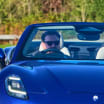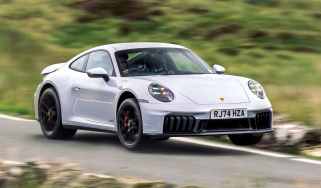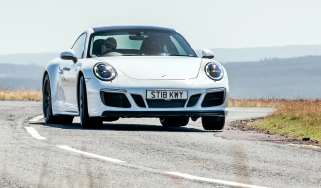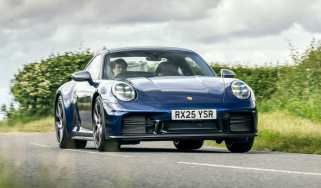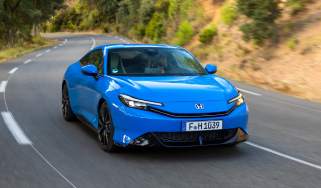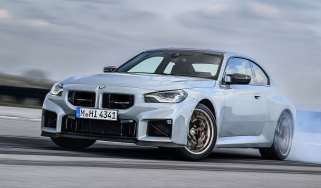The man in charge of the Porsche 911 on the future of the world’s most iconic sports car
We sat down with Porsche 911 model line director Michael Rösler to talk the future of the 911, from hybrids to manuals, to special models
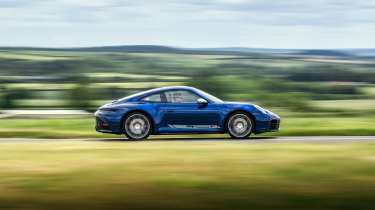
Who do you want to be in charge of the future of the Porsche 911, arguably the world’s most important sports car? A dyed-in-the-wool engineer that can strip an e-turbo down to its constituent parts before your eyes like they’re buzzing through a Rubik's cube? Perhaps an entrenched industry suit with an eye on the bottom line? If that last one had you scowling at your device like a Porsche nerd when first presented with manual vs PDK uptake figures, fear not.
The guy at the wheel, Michael Rösler, is exactly who you’d hope him to be – technically and experientially qualified for the position he holds, yes, but first and foremost, a Porsche lover, a 911 enthusiast and a car guy. As much became abundantly clear during a chat with him at the reveal of the new 992.2 911 Turbo S. Apart from chatting about his personal modified 993 and Renault Sport Clio 200, we talked about what the future holds for the 911 – from hybrid to H-pattern manuals.
We first discussed the state of the 911 as it is now in 2025. It perhaps has the most eclectic mix of powertrains that it’s ever had, between the 3-litre engines in the base Carreras, the T-hybrid single- and twin-turbo engines in the GTS and Turbo S and of course, the 4-litre in the GT3. Getting GTS (which informed the Turbo S) and the GT3 out quickly was a function of starting with the powertrains that needed the most work – a fresh start in the case of the 3.6 T-hybrid and significantly revised for emissions reasons in the case of the GT3.
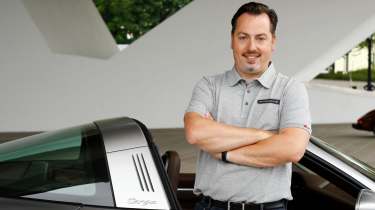
‘From an engineering point of view it would have been perfect to start with the Turbo S but given the smaller volumes, among other things, it made for a worse business case,’ Rösler explained to evo.
‘So we started with the GTS because the changes made to the car were the biggest. We try to go to the most complex system first. It was totally new – a newly developed high-voltage battery, a new e-turbo with a 400-volt system. You need the longest time to get this stable and get all the tests done. You don’t need to do these with a well-known engine, say in the base Carrera, which uses hardware from the old GTS.’
Porsche is no stranger to these moments of change – the all-new post-Mezger DFI engines were introduced in the second-generation 997, for instance. But cycle times and when to deploy models remain a point of debate at Porsche, as is evident with the slightly upturned timeline in terms of model rollout for the 992.2. At the moment, Rösler is looking four years into the future for the 992.2 – taking us to 2029 – and trying to learn lessons from what he thinks was a 991 generation that was cut off too soon in 2019. Not least because he wants more time to release specialty models.
‘We plan with four years and honestly we look at the market and how good things are going, about when to start the next model. What we learned from the 991 second-generation model is we cut it off a little too early. There were lots of really cool cars late in the model cycle, for example the Speedster and there were lots more ideas we couldn’t get to. It’s a question we’re talking about at Porsche, what’s the best cycle length.
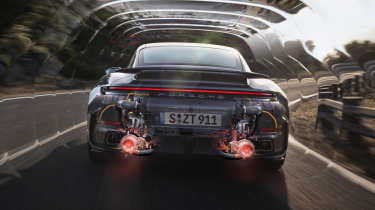
‘There are changes planned over the years to keep the models fresh, like in the infotainment, but what we try to do is keep drivetrains futureproofed from the start. The T-hybrid was developed to meet all the requirements for the future. There are a few things you will have to change maybe in Europe in two years for when EU7 starts. It’s futureproofed as much as you can predict. It’s complex to see in advance, to have a good glass ball to see things coming and not to design it on the edge of the rules and to have headroom.’
Headroom in the current powertrains is all the more important, given Rösler’s appetite for a full hybrid or plug-in solution isn’t the strongest, as he explained: ‘A plug-in system would require big changes on the body. Where do you put that battery? You could get rid of the back seats, which kills utility? Then you have lots of weight on the rear axle. There’s a point where you get too heavy in the feel in the car. There’s a point where you can’t compensate so easily. There are things you can do, large tyres, but then that generates weight. And you get a spiral. More power, more weight. A high-voltage battery is not something you can get that small and that light for a sports car.’
Perhaps the best indication that the 911 is in safe hands with Rösler, is that the Carrera T was sort of his baby – even down to the increase in focus with the six-speed transmission and the GT3-influenced shift quality. It was his response to early indications in the 992.2 programme that the Carrera, Carrera S and GTS weren’t going to get a manual, the former two for demand reasons, the latter for technical and packaging reasons with the T-hybrid powertrain.
As an aside, that’s also why a special model in the image of the last Sport Classic, which paired a manual and rear-wheel drive with the 992.1 Turbo engine won’t be possible this time around. But keeping the manual hasn’t been easy – demand ultimately decides.
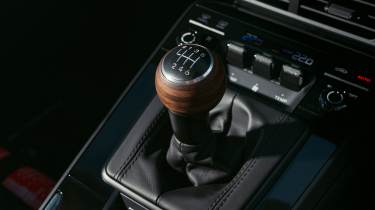
‘We look at the market closely and in Europe last time, we saw 2 maybe 3 per cent ordered a manual in the Carrera line,’ Rösler explains.
‘That gets us to some problems with our suppliers because they need to supply a certain number of parts. The US is a completely different story. The past GTS had about 50 per cent of customers ordering a manual. For Porsche, in the US and Britain, manuals are a very interesting market. We watch it closely, it’s why we did the Carrera T manual – it was one of my early decisions to do the Carrera T. We wanted to make it sharper, we looked at the cable setup from the GT3, to lower it a bit. I think the precision with the three gates makes a difference. We are thinking about all the possibilities to get the customers a manual.’
> Slantnose Porsche 911 set for a return based on old 991 GT2 RS platform
So more 911s are on the wish list at Porsche, as well as among customers. A brief laugh about the existence of the Carrera T cabriolet and how essentially the Californian market willed it into existence lead to a tease about what else Porsche’s west coast customers are manifesting:
‘You have to listen to customers and not be wedded to conventional engineering traditions in your mind. People love to hear the sound of the engine with the roof down – it’s fun so it makes sense. Those Californian customers are asking for more [manual convertibles] so let’s see what the future holds.
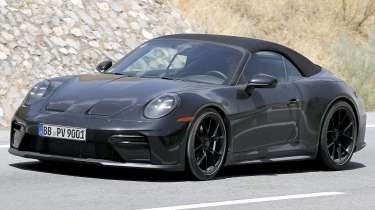
A wink and a nod, we think, at those ‘GT3 Cabriolet’ prototypes that were famously spotted testing a few months back, where else but in California. We know from his lamenting the ideas they had during the 991’s final years that didn’t make production, that specialty models are surely on the menu. One potentially being a 992.2-flavoured Dakar, a prototype of which we saw on the way out of Weissach later that day. A shame we didn’t see that before this chat so we could question him on it, not that we’d have gotten much…
Indeed Rösler wouldn’t be drawn any more on any other special concoctions in the 911 line that are on the way, though bringing up the Speedster prototypes, as well as the strange GT2 RS mules that have been spied of late, did yield a smile.
‘I can’t give it to you, you already know. Watching social media and the spy shots, of course we have plans, we’re trying things out. Not all things are decided that you see on the road. You’ll need to ask Andy about that [GT2 RS mule]. We have the free space in the company to try things out – test other engine types and see how far we can get. Not everything is decided, maybe some things you’ll see on the road later.’
A chat with the man in charge of the 911’s future serves to soothe the nerves. Come what may, preserving that X-factor that makes it so special – what’s informed its endurance as the sports car benchmark these past six decades, that underscores the values of the Porsche brand – is a top priority.
